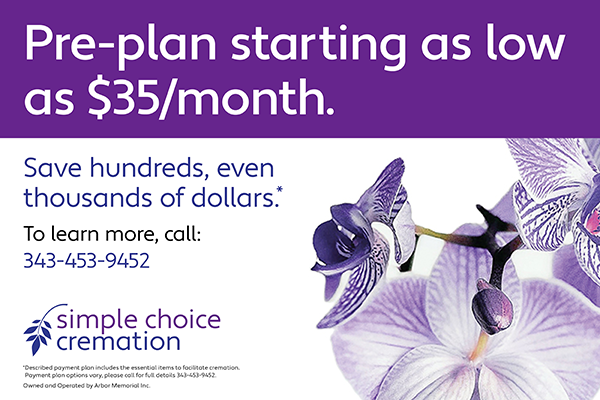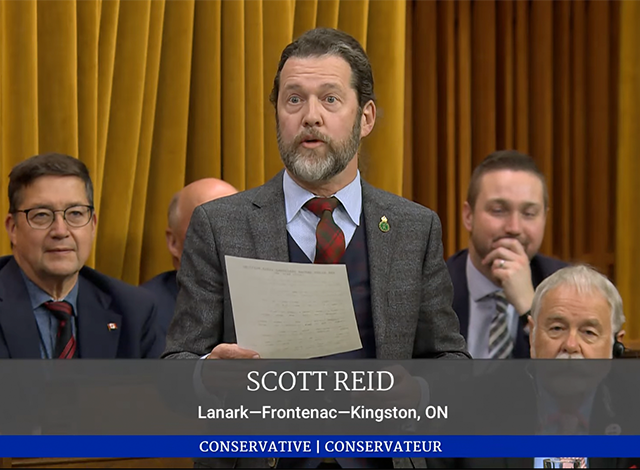SUBMITTED
The following is part of a series about homelessness in Lanark County.
In order to end homelessness, a number of strategies must be put in place. A proven strategy that has been endorsed internationally is “Housing First”. But what is it and does it really work?
The Housing First model uses a recovery-oriented approach to end homelessness. It aims to move people quickly into independent housing and then to provide relevant and appropriate supports for them to be successful. Evidence in North America has shown supported housing helps to improve quality of life and the health of participants in the short and long term, which also reduces reliance on costly emergency services.
The Homeless Hub describes it like this: “The basic underlying principle of Housing First is that people are better able to move forward with their lives if they are first housed. This is as true for people experiencing homelessness and those with mental health and addictions issues as it is for anyone.”
Once safe housing is in place, supports can include primary care, mental health, education, employment, substance abuse and other community connections.
“These are services that are available to all of us, but sometimes figuring out how to navigate them is overwhelming for people who are unhoused,” explains Director of Lanark County Social Services Emily Hollington. “Circumstances are different for everyone. Imagine if your health declined and you couldn’t work and lost your home because you couldn’t pay the bills. Survival becomes your main objective, and maybe you don’t know where to turn. Housing First helps to get the important pieces in place and helps people get the support they need.”
Housing First in Canada (Supporting Communities to End Homelessness) says housing is not about being “ready” or “compliant,” such as with sobriety. Rather, it is “a rights-based intervention rooted in the philosophy that all people deserve housing, and that adequate housing is a precondition for recovery.”
The Homeless Hub describes five core principles to the Housing First approach:
1. Immediate access to permanent housing with no housing-readiness requirements, such as sobriety or abstinence. Program participation is voluntary and does not mean emergency treatment has to be completed first.
2. Consumer choice and self-determination. Clients have choice in terms of the housing (e.g. community) and available supports they receive.
3. Recovery orientation. Basic client needs are met, but recovery is also supported to help people with social, recreational, education, occupational and employment activities. This can include harm reduction associated with substance use.
4. Individualized and client-driven supports. This recognizes individuals are unique and will require different levels of support once housed – some can be minimal and others long term.
5. Social and community integration. The strategy helps people integrate into the community through meaningful activities. Social isolation can affect the stability of housing.
Research in North America and Europe points to the success of Housing First. One study, the “At Home/Chez Soi” project, was funded by the Mental Health Commission of Canada and conducted a trial in Canada where 1,000 people participated in Housing First and 1,000 received “treatment as usual.” For those who received housing with supports, more than 80 per cent – even those with very complex needs – remained housed after the first year and, for many, saw improved health and less involvement with law enforcement.
“We are excited to be embarking on the Housing First strategy in Lanark County with 11 supported transitional housing units in Smiths Falls,” said Director of Lanark County Social Services Emily Hollington. “Having a place to live provides an essential level of stability to help people move forward in other aspects of their lives in conjunction with access to relevant services they may need to help them do this.”
To learn more about housing supports in Lanark County, see lanarkcounty.ca/en/family-and-social-services/housing.aspx. If you are experiencing homelessness, call the Lanark County Homeless Response Team at 613-267-4200 ext. 2140 or 1-888-952-6275 Monday to Friday from 8:30 a.m. to 4 p.m. or after hours at 613-206-1486.
Previous article:
What does homelessness look like in Lanark County
Next article:
What is the by-name list all about?




















Pingback: What does homelessness look like in Lanark County? - Hometown News